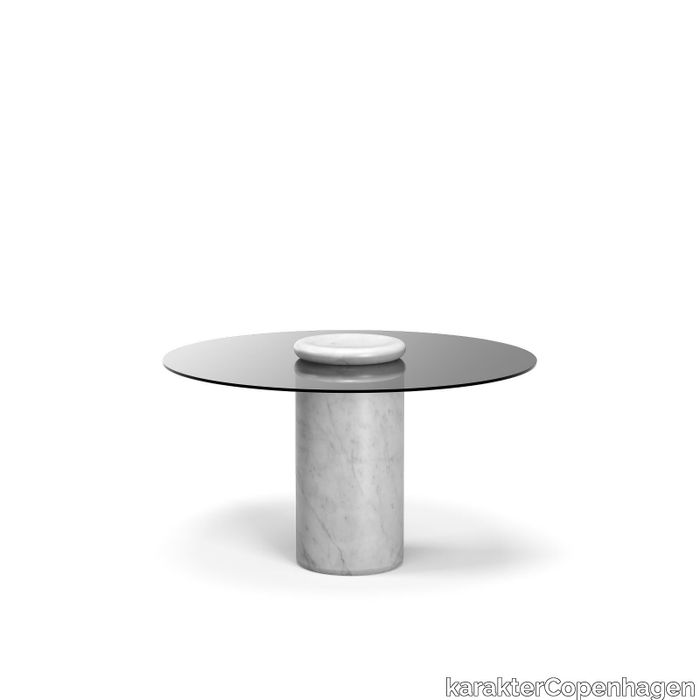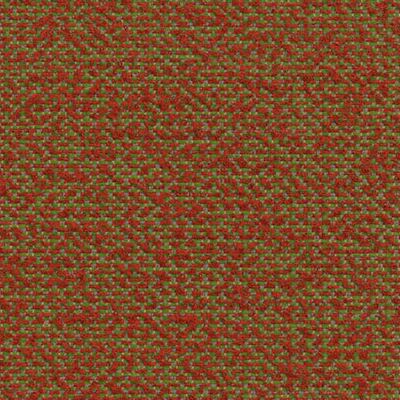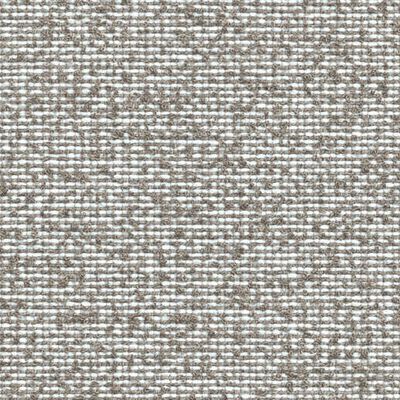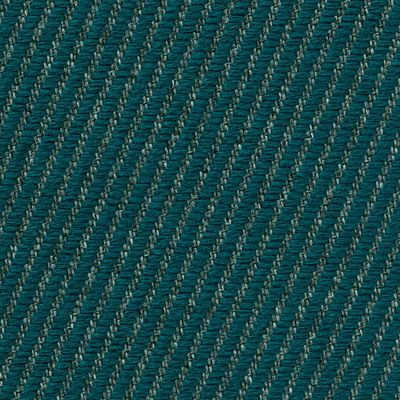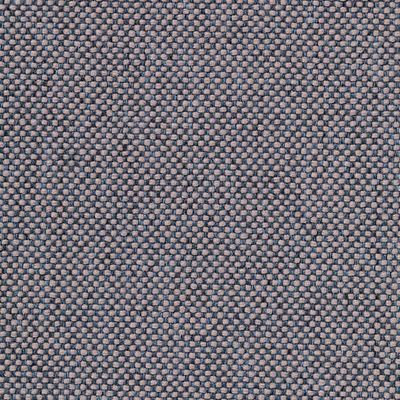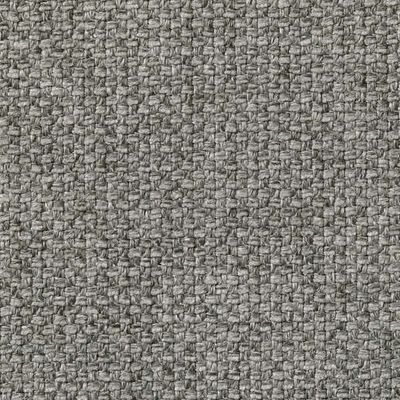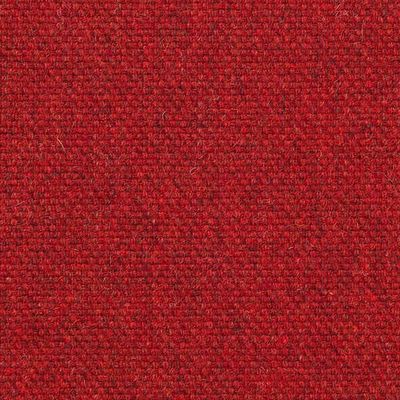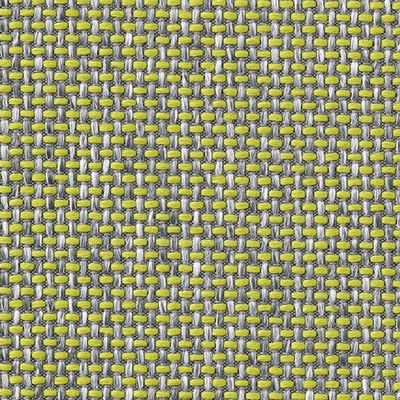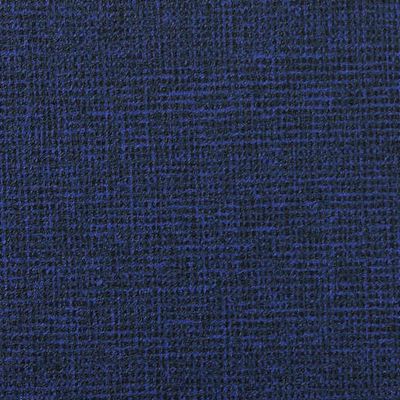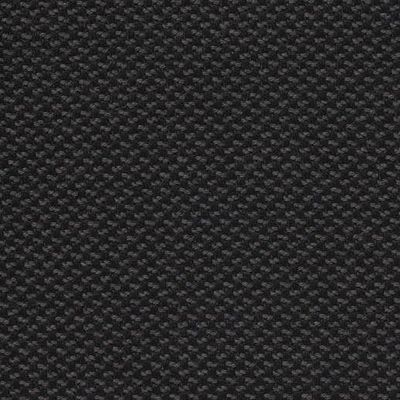PRODUCT DESCRIPTION
Castore is a glass and marble table by Italian architect, sculptor and designer Angelo Mangiarotti. Designed in 1975 for Sorgente dei Mobili, the distinct design is now presented by Karakter, available as a 130cm dining table. The round glass top rests on a heavy marble pillar, and visually, Mangiarotti would have it seem that only a small marble bowl on top of the glass plate is holding it in place. The rounded corners on both the pillar and the bowl ads a sense of softness to the otherwise heavy aesthetics of the marble. The marble bowl can be removed and used as an individual element. However, keeping it as an integral part of the design, you can enjoy additional rounded corners, as the bowl reflects in the glass table top.
SUPPLIER: KARAKTERCOPENHAGEN
TYPE: FURNITURE

OTHER SUPPLIERS
A wide range of product from near to 3,000 suppliers around the world.



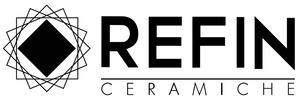


Other Products From This Supplier
A wide range of product from furniture to finishes to meet the desire of all designers.
Jazz Max Brüel, 1961

karakterCopenhagen > Styling
Elegant and with a hint of whimsy, the modular candleholder Jazz was conceived in 1961 by Danish architect, ceramist and jazz musician Max Brüel. A slender, graceful silhouette in three heights, Jazz is an elegant addition to the home – by itself or in groups. A Jazz candleholder comes with a top, a base and three interchangeable stems in different heights to fit any occasion.
Office Desk Bodil Kjær, 1959

karakterCopenhagen > Desk
We are proud to present our first design from a Danish designer. In this case, Danish architect, professor, and designer, Bodil Kjær. The iconic desk, designed in 1959, was the first of its kind with its pure and simplistic design, almost floating mid-air. Bodil Kjærs’ design has been called ‘The most beautiful desk in the world’ – or, the ‘James Bond desk’ as it was featured prominently in three early Bond movies.
Scarpa 925 Afra & Tobia Scarpa, 1966

karakterCopenhagen > Chair
The iconic 925 Scarpa lounge chair is a strikingly elegant lounge chair. Easily recognized by its firm and robust wooden frame and the striking contrast it creates to the lightness of the leather covered seat and backrest. The anatomical design of the leather-covered seat, combined with the natural elasticity of the cantilevered backrest, creates a lounge chair that is equally comfortable and strikingly elegant. The 925 Scarpa lounge chair was designed alongside the charming 121 Scarpa dining chair from 1965. The two chairs are a prime example of Afra and Tobia Scarpa’s work and share the same double trestle structure with characteristic rounded joints. Both designs are now a part of the Karakter collection.
Sferico Joe Colombo, 1968
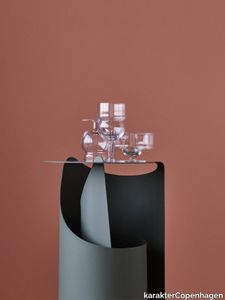
karakterCopenhagen > Styling
Joe Colombo believed in democratic and functional design. In his lifetime he designed a wide range of different drinking glasses. Something that seems very to the point as he was said to love drinking and smoking. Unfortunately this undoubtedly contributed to his young demise, but we’d like to think he would be pleased to see that his creations live on. In 1968 he designed a series of six glasses, all based on geometrical figures. True to his democratic and functional take on design, all the glasses were intended for a wide range of different usage—such as water, long drinks, whisky, wine, beer, juice, champagne, ice cream and so on. Karakter is proud to bring some of the very finest glasses to your table and will introduce the six different Joe Colombo glasses.
Heddles throw Karin Carlander, 2022
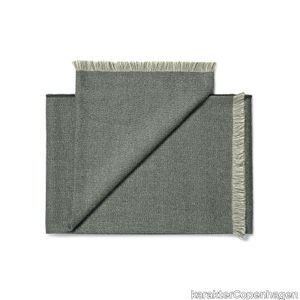
karakterCopenhagen > Styling
Weaver and textile artist Karin Carlander interprets classic techniques as the backbone of her creative process. Two new designs – a rectangular rug woven from paper yarn and a fringed throw in alpaca wool – showcase this craftsmanship in contemporary pieces for the home. When it came to the Heddles throw, Carlander selected alpaca wool from the Andes mountains. These thin, glossy fibers were woven into a luxurious blanket that features a subtle ridged design. Along the throw’s edge, a delicate fringe invites a closer look at the construction process, which sees the loom’s warp and weft working together. “This analogue way of creating is a collaboration between my loom and the material,” says Carlander. “The way threads and colours perform is new and unexpected with each material. Even after so many years, the craft continues to surprise me.”
Scarpa 121 Afra & Tobia Scarpa, 1965

karakterCopenhagen > Chair
The iconic 121 Scarpa dining chair is a straightforward dining chair with a design that can complement both classical and cutting-edge interiors. The design is characterized by a firm and robust wooden frame that creates a striking contrast to the lightness of the seat and back. The seat and back are anatomically shaped in plywood, covered in fine European leather, and attached by bolts to crosspieces along the center for great comfort. Originally inspired by a sketch made by Tobia’s father, Venetian architect and designer, Carlo Scarpa, the 121 came to life with a distinct touch from Afra and Tobia Scarpa in 1965. The 121 Scarpa dining chair was designed alongside the classic 925 Scarpa lounge chair from 1966. The two chairs are a prime example of Afra and Tobia Scarpa’s work and share the same double trestle structure with characteristic rounded joints. Both designs are now a part of the Karakter collection.
Principal dining table Bodil Kjær, 1961

karakterCopenhagen > Table
One of the last living mid-century Scandinavian design pioneers and a female pioneer in the field of architecture in her time, Bodil Kjær, conceived her Principal series in 1961 as part of an architectural exploration of interior solutions for modern living, called Elements of Architecture. Comprising a dining table and an upholstered dining chair, the Principal series epitomises Kjær’s forward-thinking cosmopolitan outlook and modernistic design language that slips fluidly into contemporary interior. The solid wood dining table boasts a clarified form, repeating a simple angle throughout table legs and ends of the table top, while the dining chair with its circular seat and gently rounded backrest, beautifully upholstered, adds a softness to the clear, unfussed geometry, an invitation to linger.
Cross Plex table Bodil Kjær, 1959

karakterCopenhagen > Coffee table
The CrossPlex Low Table was created as part of Kjær’s forward-thinking functional Elements of Architecture furniture program developed between 1955 and 1963. Over the decades this crisp occasional table has retained its timeless appeal, making it a welcome addition to a range of contemporary settings. Constructed of a cruciform acrylic base that supports a square glass top, the inherent transparency of the CrossPlex brings an air of lightness to the room.
Domo Floor Joe Colombo, 1965
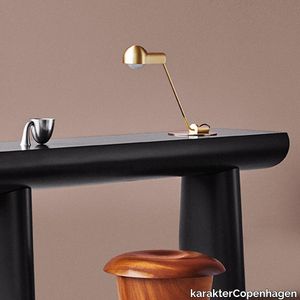
karakterCopenhagen > Floor lamp
The Domo lamp was originally designed by Italian designer Joe Colombo in 1965. Back then he designed three lamps based on the same core shape. Known for his democratic and functional design, his flexible and convertible furniture meant to be used in many different ways – all to the benefit of the user. Joe Colombo experi-mented with new materials and the latest technologies and designed futuristic “machines for living”, many of which have become icons for a new way of living. One of them is Domo. Colombo often rejected sharp corners and straight lines in favour of curvaceous forms.
Domo Table Joe Colombo, 1965
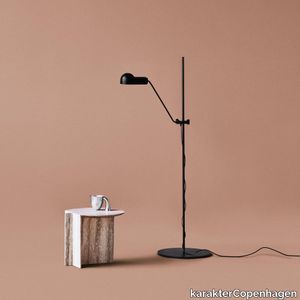
karakterCopenhagen > Table lamp
The Domo lamp was originally designed by Italian designer Joe Colombo in 1965. Back then he designed three lamps based on the same core shape. Known for his democratic and functional design, his flexible and convertible furniture meant to be used in many different ways – all to the benefit of the user. Joe Colombo experimented with new materials and the latest technologies and designed futuristic “machines for living”, many of which have become icons for a new way of living. One of them is Domo. Colombo often rejected sharp corners and straight lines in favour of curvaceous forms.
Bon Aldo Bakker, 2017
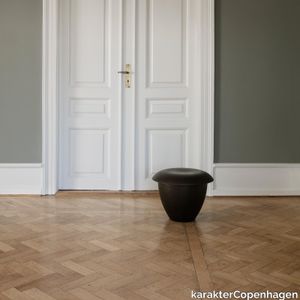
karakterCopenhagen > Stool
A rework of Dutch artist and designer, Aldo Bakker’s wondrous Pink Stool in urushi lacquer from 2015, Bon in stained ash exudes Bakker’s accomplished sense of serene form and materiality. The sculptural stool consists of two contradictive container shapes put together: an upright and deep vertical shape and a flat horizontal shape that defines the seating.
Aida Angelo Mangiarotti, 1988
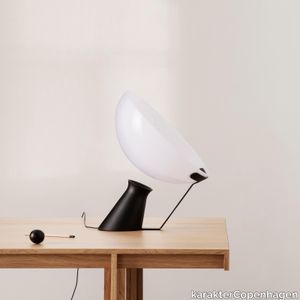
karakterCopenhagen > Table lamp
Esteemed for his researched and controlled approach to materials, Italian architect, sculptor and designer Angelo Mangiarotti created the almost gravity-defying Aida lamp with its visual disconnect between the base and shade and a pleasing ambient light. Referencing principles of his hailed architecture, where slim, elegant pillars support large and heavy ceilings in an almost impossible lift, Mangiarotti conceived Aida’s beautifully poised silhouette.
Hang Around large Derek McLeod,Joy Charbonneau, 2023

karakterCopenhagen > Styling
Hang Around is an updated version of the classic coat rack. Spacious and sturdy, Derek McLeod and Joy Charbonneau’s Hang Around has a soft, rounded expression that contrasts well to the sturdiness of the design. The dedicated pegs and their respective bars will add a welcoming and distinctive vibe to hallways and bedrooms, waiting areas, hotels, and restaurants. Produced in metal, the Hang Around is available in a large version with seven pegs, and in a small version with four pegs.
Lari Angelo Mangiarotti, 1978
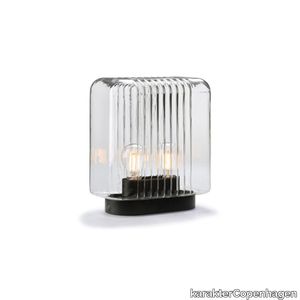
karakterCopenhagen > Table lamp
The Lari Lamp, mouth blown in one single piece, that are held together by the base, which also supports the electrical system evokes, on a small scale, some suggestions of Angelo Mangiarotti’s previous architecture.
Awkward Light Anatomy Design, 2012

karakterCopenhagen > Floor lamp
Quirky and slightly off, Awkward is a floor lamp with a deliberately peculiar anatomy - its long, slender arms reaching to illuminate two areas in close proximity: two sides of a sofa or both an armchair and a desk.
Libreria Pensile Achille Castiglioni,Pier Giacomo Castiglioni, 1957
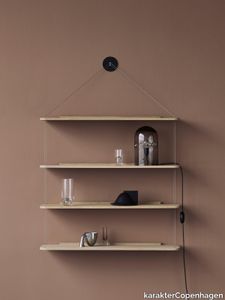
karakterCopenhagen > Cabinet
Originally designed in 1957, perfected over the years, and produced by Bernini in 1966. Seeking to pare down the structure of a bookcase to the absolute minimum, Castiglioni decided to hang the shelves on knots in two cords fixed to a single point on the wall. 50 years after it was launched it is still relevant, elegant, and very Castiglioni.
Pivot Aldo Bakker, 2014

karakterCopenhagen > Styling
Silver with gold on top. A playful and chunky shape with a fine and delicate structure around the lid. All contrasting to the full-blown extravagance of the materials. 100% fine silver, plated with gold. Aldo Bakker, “I question the most common significance of products and thus also their use. In an ideal situation, every object takes on its own character and gains its own legitimacy. My designs are not based on fashion. They are unique pieces, not necessarily understandable at a glance, but meant for a slow, layer by layer exploration.”
Fat One Aldo Bakker, 2015
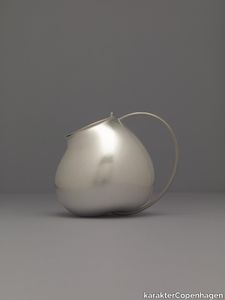
karakterCopenhagen > Styling
“My designs are not based on fashion. They are unique pieces, not necessarily understandable at a glance, but meant for a slow, layer by layer exploration.” Much like all other designs by dutch Aldo Bakker this intriguing shape is designed to surprise. The bottom of Fat One resembles an apple. And where you’ll normally find the stem of the apple, Bakker has connected one end of the handle. The other end is connected to the opening and lid. Fat One is made in silver, bent through electro forming and grown around a perfect model using CNC milling to ensure the precise positioning of the handle. The handle is made in steel, to ensure enough strength to hold the Fat One.
TriAngle Aldo Bakker, 1996

karakterCopenhagen > Stool
The Dutch designer, Aldo Bakker, is known for his uncompromising approach to design. This is a perfect example of his work. TriAngle consists of 12 triangular elements—cut to fit together like the perfect puzzle. The final puzzle reveals a square stool or side table with a distinguished and very precise look. The sharp corners and visible cuts will become softer and gain patina over time, making tear, wear and decay a very essential part of this design. Aldo Bakkers’ work has a delicate and rare sense of harmony and his ideas are always intended to trigger a response. He wants to challenge us with his design, to make us stop our everyday routines for a minute and ponder over an odd little feature, hopefully making us perform our everyday casual acts with more attention.
Chair 300 Joe Colombo, 1965
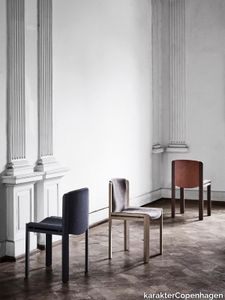
karakterCopenhagen > Chair
Designed by the forward-thinking Italian designer Joe Colombo, Chair 300 is a beautiful example of his functional design sensibility. Upholstered seat and back gently curved inside a modest, clear wooden frame with double horizontal slats give Chair 300 its appealing, comfortable and characteristic look.
Comodo Achille Castiglioni, 1988

karakterCopenhagen > Cabinet
Poised on a slim metal stem, Comodo’s wood cabinet is set off-centre with a lidded compartment. Castiglioni and Pozzi’s elegant multi-purpose unit can be used as a bedside table, a tray, a coffee table or simply as a storage box for all your favourites. Supposedly Castiglioni, being a big fan of sweets, used his own Comodo to store candy.
Lungangolo Achille Castiglioni, 1991
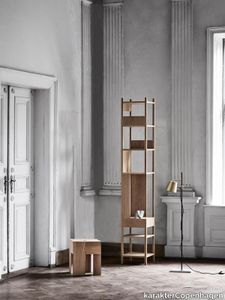
karakterCopenhagen > Styling
Castiglioni is said to ponder a lot on lost space. Empty inches and square meters that could be filled with beautiful design—but for some reason just never were. Due to this thinking he did many designs intended specifically for the corners of the home. Lungangolo is one of those. Lungangolo is a multi-use piece of furniture originally produced by Bernini. The frame is made of four slender pillars with square cross-sec-tions in between to support the square shelves placed in various heights. The structure is strengthened by a drawer and a side piece. The position of the drawer and elimination of part of the support meant it had to be manufactured in two versions—to work for both left and right handed.
Clessidra Vase Joe Colombo, 1969
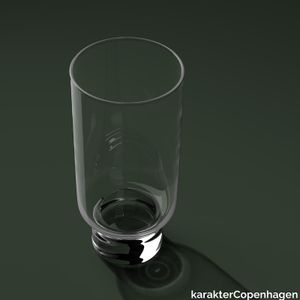
karakterCopenhagen > Styling
Prolific Italian architect and designer Joe Colombo created a wide array of appealing glass objects in his time. He worked with shapes, light, and silhouettes, and had an impressive way of creating small sculptures out of even the most functional homeware pieces. Clessidra vase is a timeless and beautifully scaled glass object, where the container of the vase is raised gracefully from the light base to lift the flowers up in the air. Colombo’s original drawings from 1969 shows a unique idea for a range of multiuse glass objects based on geometrical figures. One of these being the tall, slender Clessidra vase.
Console Table Aldo Bakker, 2017
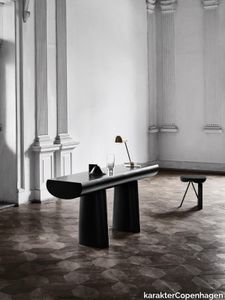
karakterCopenhagen > Console
Tranquil and seductive, Aldo Bakker’s Console Table floats exquisitely between sculpture and furniture. It depicts the simplest concept of a table: two columns and a surface. The legs are an elongation of the line created by the tabletop. The tabletop and the base of the legs have the same width, making them equally important to the design. The distance between the legs is not fixed, but can be changed as preferred, adding to the sculptural quality of this piece.
Coffee Table Aldo Bakker, 2015
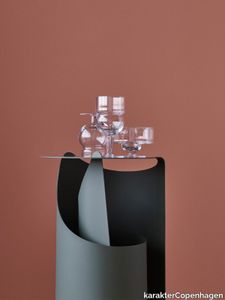
karakterCopenhagen > Coffee table
A single sheet of steel rolled in one smooth motion into a self-supporting construction. Aldo Bakker’s exquisite sense of merging colour, material and form has come into play to create an occasional table with an effortlessly sculptural appeal.
Lab Light Table Anatomy Design, 2010

karakterCopenhagen > Table lamp
The Lab Light design came about from a genuine fascination with laboratory equipment and with all those fantastic clamps and levers — the perfect place to start designing a multi-functional lamp. The base is porcelain, the stem is painted steel, and the lampshade and rotating arm is brass.
Lab Light Floor Anatomy Design, 2010

karakterCopenhagen > Floor lamp
The Lab Light design came about from a genuine fascination with laboratory equipment and with all those fantastic clamps and levers — the perfect place to start designing a multi-functional lamp. The base is porcelain, the stem is painted steel, and the lampshade and rotating arm is brass.
Steel Lab Light Floor Anatomy Design, 2010

karakterCopenhagen > Table lamp
Inspired by her parents’ pharmaceutical work and their old lab equipment, Andrea Kleinloog from Anatomy Design designed the Lab Light mixing steel, brass and porcelain. This brought on a desire to make a lamp with a younger feel. Base, lampshade, and rotating arm—all in painted aluminium.
Steel Lab Light Table Anatomy Design, 2010

karakterCopenhagen > Table lamp
Inspired by her parents’ pharmaceutical work and their old lab equipment, Andrea Kleinloog from Anatomy Design designed the Lab Light mixing steel, brass and porcelain. This brought on a desire to make a lamp with a younger feel. Base, lampshade, and rotating arm—all in painted aluminium.
Middleweight Pouf Michael Anastassiades, 2021
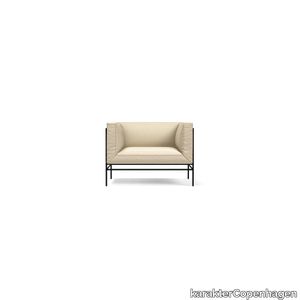
karakterCopenhagen > Chair
The Middleweight sofa captures the best of two worlds, the Italian super lounge sofa on one side and the compact Danish box sofa on the other. Set on a thin, open steel frame, the cushions are firmly held together by zippers and carefully mitered in the corners of the frame, resembling the sharp edges of folded paper. Middleweight is a luxuriously comfortable sofa, available as an arm-chair, 2-seater or 3-seater sofa and pouf. “This was my first sofa design, but actually the biggest surprise didn’t come until the product was finalized – when we stood there, looking at the actual sofa, and it looked exactly like what I had in my head. It is a great satisfaction as a designer. You can’t accelerate the process of design. An idea has to come when the time is right, so you have to stretch the process as long as possible and allow for enough time to get the ideas and experiments across.”
Middleweight armchair Michael Anastassiades, 2021

karakterCopenhagen > Chair
The Middleweight sofa captures the best of two worlds, the Italian super lounge sofa on one side and the compact Danish box sofa on the other. Set on a thin, open steel frame, the cushions are firmly held together by zippers and carefully mitered in the corners of the frame, resembling the sharp edges of folded paper. Middleweight is a luxuriously comfortable sofa, available as an arm-chair, 2-seater or 3-seater sofa and pouf. “This was my first sofa design, but actually the biggest surprise didn’t come until the product was finalized – when we stood there, looking at the actual sofa, and it looked exactly like what I had in my head. It is a great satisfaction as a designer. You can’t accelerate the process of design. An idea has to come when the time is right, so you have to stretch the process as long as possible and allow for enough time to get the ideas and experiments across.”
Middleweight 2-seater Michael Anastassiades, 2021

karakterCopenhagen > Chair
The Middleweight sofa captures the best of two worlds, the Italian super lounge sofa on one side and the compact Danish box sofa on the other. Set on a thin, open steel frame, the cushions are firmly held together by zippers and carefully mitered in the corners of the frame, resembling the sharp edges of folded paper. Middleweight is a luxuriously comfortable sofa, available as an arm-chair, 2-seater or 3-seater sofa and pouf. “This was my first sofa design, but actually the biggest surprise didn’t come until the product was finalized – when we stood there, looking at the actual sofa, and it looked exactly like what I had in my head. It is a great satisfaction as a designer. You can’t accelerate the process of design. An idea has to come when the time is right, so you have to stretch the process as long as possible and allow for enough time to get the ideas and experiments across.”
Middleweight 3-seater Michael Anastassiades, 2021

karakterCopenhagen > Chair
The Middleweight sofa captures the best of two worlds, the Italian super lounge sofa on one side and the compact Danish box sofa on the other. Set on a thin, open steel frame, the cushions are firmly held together by zippers and carefully mitered in the corners of the frame, resembling the sharp edges of folded paper. Middleweight is a luxuriously comfortable sofa, available as an arm-chair, 2-seater or 3-seater sofa and pouf. “This was my first sofa design, but actually the biggest surprise didn’t come until the product was finalized – when we stood there, looking at the actual sofa, and it looked exactly like what I had in my head. It is a great satisfaction as a designer. You can’t accelerate the process of design. An idea has to come when the time is right, so you have to stretch the process as long as possible and allow for enough time to get the ideas and experiments across.”
Rampa Achille Castiglioni,Pier Giacomo Castiglioni, 1965

karakterCopenhagen > Desk
Rampa, a multifunctional station on wheels from 1965, was inspired by the traditional florist’s display stands found on Italian town squares. On one side, the steps serve as a bookshelf with the four steps being covered with tempered glass plates, and a compartment in the lower large step, which is closed with a flap door. At the opposite side of Rampa, there are two visible compartments for storage as well as a larger flap that, when opened, acts as a writing desk, and reveals two more compartments, and six drawers. Thanks to the four castors, two of which has brakes, the object can easily be moved around or fixed.
Side Table No. 2 PlueerSmitt, 2014

karakterCopenhagen > Side table
Striking. Wooden side table consisting of two stripped-down trestles and a table top. The seemingly heavy top contrasts the rigid trestles. The top gives in and provides space for the sharp ends of the trestles to lock the legs and the top together. Intriguing shapes, familiar yet not at all, balancing between art and design. Viewed from different angles the side table varies greatly. A design meant to puzzle our understanding of shape, form and function.
Cache Console Paul McCobb, 1952
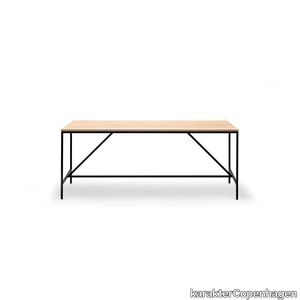
karakterCopenhagen > Console
The foundation of the Cache series, part of Paul McCobb’s extensive Planner series, is a beautifully simplistic and easy table with slim and straight steel legs, stripped from any details or ornament, leaving only small drawers that can be mounted individually or grouped on either side of the table for small keepings. The series is complimented with the matching Desk Organiser with two drawers and a shelf supported by a steel frame. A prominent figure in American mid-century design, Paul McCobb conceived the Planner series in the 1950s, a modular furniture series that brought modern design into middle-class American households. The aesthetic attribute of McCobb’s design is sleek and unadorned and at the same time warm and approachable. With its versatility and purity of form, the Planner series became one of the most successful commercial furniture lines of its era.
Principal chair Bodil Kjær, 1961
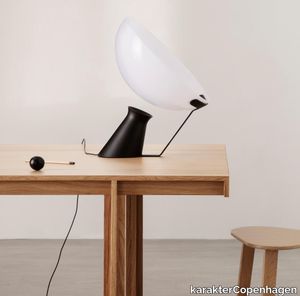
karakterCopenhagen > Chair
One of the last living mid-century Scandinavian design pioneers and a female pioneer in the field of architecture in her time, Bodil Kjær, conceived her Principal series in 1961 as part of an architectural exploration of interior solutions for modern living, called Elements of Architecture. Comprising a dining table and an upholstered dining chair, the Principal series epitomises Kjær’s forward-thinking cosmopolitan outlook and modernistic design language that slips fluidly into contemporary interior. The solid wood dining table boasts a clarified form, repeating a simple angle throughout table legs and ends of the table top, while the dining chair with its circular seat and gently rounded backrest, beautifully upholstered, adds a softness to the clear, unfussed geometry, an invitation to linger.
Cache Dining table Paul McCobb, 1952

karakterCopenhagen > Desk
The foundation of the Cache series, part of Paul McCobb’s extensive Planner series, is a beautifully simplistic and easy table with slim and straight steel legs, stripped from any details or ornament, leaving only small drawers that can be mounted individually or grouped on either side of the table for small keepings. The series is complimented with the matching Desk Organiser with two drawers and a shelf supported by a steel frame. A prominent figure in American mid-century design, Paul McCobb conceived the Planner series in the 1950s, a modular furniture series that brought modern design into middle-class American households. The aesthetic attribute of McCobb’s design is sleek and unadorned and at the same time warm and approachable. With its versatility and purity of form, the Planner series became one of the most successful commercial furniture lines of its era.
Castore dining table Angelo Mangiarotti, 1975
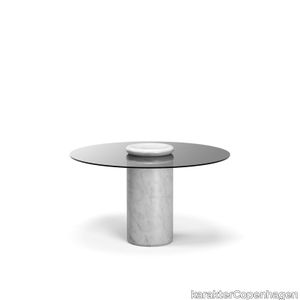
karakterCopenhagen > Table
Castore is a glass and marble table by Italian architect, sculptor and designer Angelo Mangiarotti. Designed in 1975 for Sorgente dei Mobili, the distinct design is now presented by Karakter, available as a 130cm dining table. The round glass top rests on a heavy marble pillar, and visually, Mangiarotti would have it seem that only a small marble bowl on top of the glass plate is holding it in place. The rounded corners on both the pillar and the bowl ads a sense of softness to the otherwise heavy aesthetics of the marble. The marble bowl can be removed and used as an individual element. However, keeping it as an integral part of the design, you can enjoy additional rounded corners, as the bowl reflects in the glass table top.
Cache desk organiser Paul McCobb, 1952

karakterCopenhagen > Cabinet
The foundation of the Cache series, part of Paul McCobb’s extensive Planner series, is a beautifully simplistic and easy table with slim and straight steel legs, stripped from any details or ornament, leaving only small drawers that can be mounted individually or grouped on either side of the table for small keepings. If more storage and distinctiveness is needed, add the second piece in the series, the two-drawer organizer that resides on a slender leg construction as the table itself and has the same playful two-finger opening system as the drawers in the desk. The Desk Organiser can be placed on the desk or used as a stand-alone item next to sofas or beds.
Recently Viewed Products
A wide range of product from furniture to finishes to meet the desire of all designers.
Hana Table
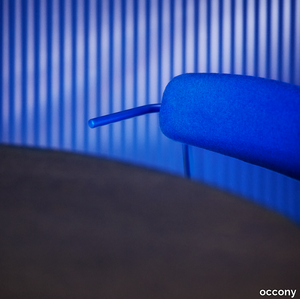
occony > Coffee table
The Hana table is the first product of the unique collection in collaboration with circular interior brand Aectual. The name Hana refers to the Japanese pronunciation of ‘flower’, subtly referring to its aesthetics.Through profound material research and -testing, Occony optimizes the technical capabilities of Aectuals’ 3D printed PolyAI into a robust product that serves multiple applications in the hotel- and office- interior area. Hana table's curved base, crafted from recycled drink carton foils, enables circular use through shredding and reprinting after use.Available in various colors from the Occony collection, the Hana table comes in dimensions of 105cm, 120cm, and 130cm in diameter.
Shades of Venice
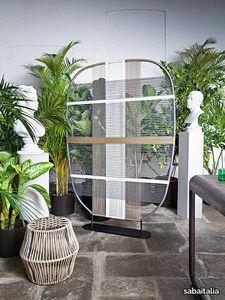
sabaitalia > Armchair
The Shade of Venice dividers, inspired by the Venetian islands and their local glow, are created with a magical colorful weave of nautical cords. From the white stone of Giudecca to the colors of the vegetables that grow in the garden patches of Venice’s Sant’Erasmo, four variations were born: Murano, Burano, Giudecca and Sant’Erasmo. The light blue and green colors of Murano play in the threads of the divider’s weave, whilst the bright tonalities and contrasts of the Burano design reflect the colorful houses of the island in orange and blue. The design plays with positive and negative space, creating a peek-a-boo effect subtly revealing the surroundings beyond. The Shade of Venice dividers allow for great flexibility and infinite styling possibilities, both indoor and outdoor.
Castore dining table Angelo Mangiarotti, 1975

karakterCopenhagen > Table
Castore is a glass and marble table by Italian architect, sculptor and designer Angelo Mangiarotti. Designed in 1975 for Sorgente dei Mobili, the distinct design is now presented by Karakter, available as a 130cm dining table. The round glass top rests on a heavy marble pillar, and visually, Mangiarotti would have it seem that only a small marble bowl on top of the glass plate is holding it in place. The rounded corners on both the pillar and the bowl ads a sense of softness to the otherwise heavy aesthetics of the marble. The marble bowl can be removed and used as an individual element. However, keeping it as an integral part of the design, you can enjoy additional rounded corners, as the bowl reflects in the glass table top.
ONSEN - 2 seater garden sofa _ GANDIABLASCO

GANDIABLASCO > Sofa
Here’s the rephrased and expanded product description, including a concise supplier overview and mention of the 3D file availability: *"Francesco Meda and David Quincoces collaborate with GANDIABLASCO—a Valencia-based leader in innovative outdoor and indoor design since 1941—to create ONSEN, a future-classic collection blending young talent with timeless elegance. Defined by peaceful beauty and minimalist gestures, the line features dining club armchairs, sofas, lounge chairs, modular seating, and low tables, masterfully uniting materials like stainless steel, elastic straps, aluminum, and teak in harmonious contrast. ‘I emphasize material particularities to serve both function and relaxed aesthetics,’ notes Meda, highlighting the collection’s geometric yet generous lines, which adapt seamlessly from relaxed retreats to formal settings. A standout detail is the interlaced leather straps supporting seats and backrests, suspended from a stainless steel frame—a fusion of graphic appeal and technical ingenuity. The interplay of lightweight aluminum and warm leather defines ONSEN’s identity, offering versatility and sophistication. For designers, the 3D file of the product is available for download, enabling seamless integration into projects."* (Supplier note condensed to one sentence as requested.)
Recommended Products
A wide range of product from furniture to finishes to meet the desire of all designers.
70/70 Table

muuto > Table
The 70/70 Table is designed with a simple expression, paired with subtle, understated details that reveal themselves upon closer inspection. Adding character to the design, the details of the 70/70 Table include the triangular shape of its base for a modern expression and the slanted edges of the table top. Available in a variety of sizes and finishes, the 70/70 Table is an ideal match for any dining area, home office, workplace or hospitality area.
Workshop Table

muuto > Table
The Workshop Table joins together the ideals of Scandinavian craftsmanship and subtle detailing for a deliberately simple and archetypal expression. With its tabletop in either oak veneer or linoleum harmoniously carving itself into the solid oak frame, the Workshop Table brings a refined and understated appearance to any setting.
Base Table
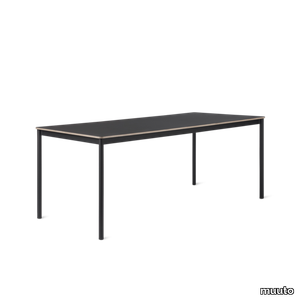
muuto > Table
The Base Table references the heritage of Scandinavian design through its simple frame and subtle details. With its design harking back to the essence of a table, the Base Table features a veneer edge for a touch of Scandinavian materiality, paired with the elegant shapes of its table top and frame. Use the design in any home, workplace, educational institution or hospitality space for notes of Scandinavian simplicity.
Base High Table

muuto > Table
The Base High Table references the heritage of Scandinavian design through its simple frame and subtle details. With its design harking back to the essence of a table, the Base High Table comes with either a veneer edge for a touch of Scandinavian materiality or an edge in ABS for a monochrome appearance, paired with the elegant shapes of its table top and frame. Use the design in any workplace, educational institution or hospitality space for notes of Scandinavian simplicity.
Linear System Configurations

muuto > Table
The Linear System Table is a simple yet refined table with subtle details and references to the Scandinavian design heritage. Its legs are cut into half-circles and joined with the table for a light expression while the slender overhang at both ends of the table makes for a refined expression. The Linear System Table is available as a freestanding table to be used on its own, as predesigned configurations or as Middle and End Modules that can be configured to the exact needs of your space.
Base Table With Castors

muuto > Table
Simple and elegant lines, joined by the functionality of castors. Frame is made from extruded aluminum, painted with an acrylic paint initially developed for outdoor interiors and building facades. Organize and manage cords and wires with our Cable Management. Our Power Outlet can be added to the Base Table. Made-to-order: Laminate with ABS or plywood edge in black or white. Linoleum with plywood edge in black. Nanolaminate finish in either black or white. Bases available in Black or White with matching castors.
Toveri Dining
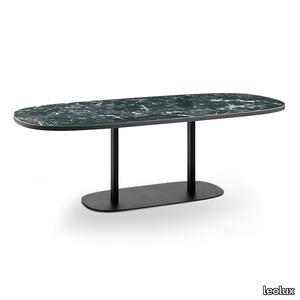
leolux > Table
Studio Truly Truly has designed a wonderfully luxurious dining table to join the Toveri family by Leolux. Just like the coffee tables, the Toveri dining table is an interplay of soft shapes and hard materials, shadows and curves.
Bondi

leolux > Table
Leolux was looking for something new, a table that adds a pop of colour to the interior. Bondi is the perfect answer. Its unusual organic leaf shape is the first thing to stand out, with space for at least five users.
Columna
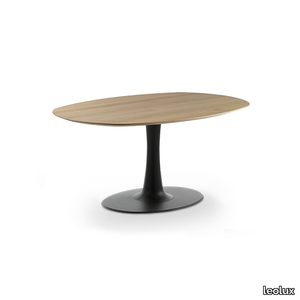
leolux > Table
Columna is a table built on pure form, with the base and table top connected by a straight column. The only playful element Hugo de Ruiter allowed is the way the column links to the base: like an ancient marble column.
Viscount of wood rectangular

kartell > Table
VISCOUNT OF WOOD tables are the latest addition. These naturally composed tables complement the collection's choice of seats and create a sustainable living area in which wood plays a central role thanks to its lightweight properties. These large items of furniture feature top-quality materials and advanced manufacturing technology. The square and rectangular versions with four legs come in five sizes (100x100, 145x80, 160x90, 190x90 and 240x100) and three top finishes: light ash with two darker shades, flamed walnut and a third, characterised by thin strips of different tones of dark wood. The legs are in chrome or black.
Glossy marble oval
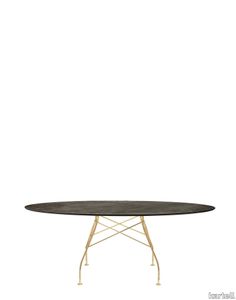
kartell > Table
A family of tables ideal for the home and office. The light steel structure is made particular by the use of the cross element that joins the legs on each of the four sides, supporting the top. The collection comprises square, oval and round versions.
Pavilion AV18
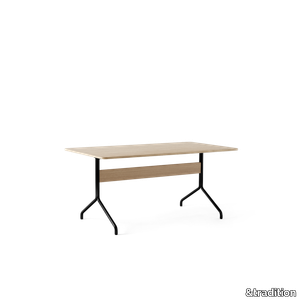
&tradition > Table
Available in three sizes, the larger, six or eight-person Pavilion table is ideal for an office meeting room or dining space while the smaller, four-person version is a perfect addition to the home. The table can be matched with the Pavilion desk to provide a cohesive design experience, and cable management can be easily inserted into the table due to the location of the stretcher.
Pavilion AV24

&tradition > Table
Available in three sizes, the larger, six or eight-person Pavilion table is ideal for an office meeting room or dining space while the smaller, four-person version is a perfect addition to the home. The table can be matched with the Pavilion desk to provide a cohesive design experience, and cable management can be easily inserted into the table due to the location of the stretcher.
In Between SK4
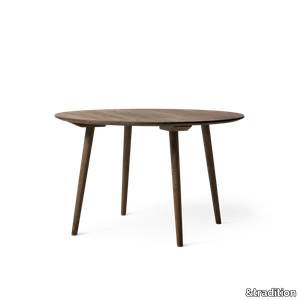
&tradition > Table
Inspired by the Scandinavian heritage of design and furniture craftmanship, In Between is a result of Sami Kallio’s solid grounding in traditional wood- working techniques and his eye for ingenious detail. It started with a single chair which later resulted in a series of furniture including both tables and bar stools. Get this In Between dining table in three different variants.
BM1160 Hunting Table

carlhansen > Table
Børge Mogensen designed the BM1160 Hunting Table for the Copenhagen Cabinetmakers’ Guild Furniture Exhibition in 1950. The table combines excellent woodwork with elegant metal brace bars, creating a bold and organic whole.
CH002 Dining Table
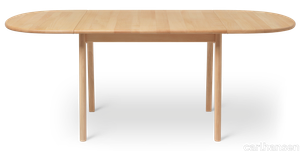
carlhansen > Table
The CH002 is the smaller of two dining tables that Hans J. Wegner created in 1982. The table expresses Wegner’s functional design philosophy through an appealing solution for modern interiors. The CH002 is crafted to fit smaller spaces, and can be extended easily with two accompanying leaves.
CH006 Dining Table

carlhansen > Table
At 90 x 138 cm, the CH006 is a longer version of the CH002 dining table, designed in 1982. The table, with solid extension frames and built-in grip for the two hinged extension leaves with rounded edges, illustrates Hans J. Wegner’s visionary approach to functional design. The CH006 table is versatile and can be adapted to smaller gatherings as well as larger dinner parties.
UPHOLSTERY
A wide range of Upholstery and materials provided by our suppliers to satisfy your needs.
AI services
Fringe Chatbot | Image Finder | Fringe Dall-e | Area Analyzer


